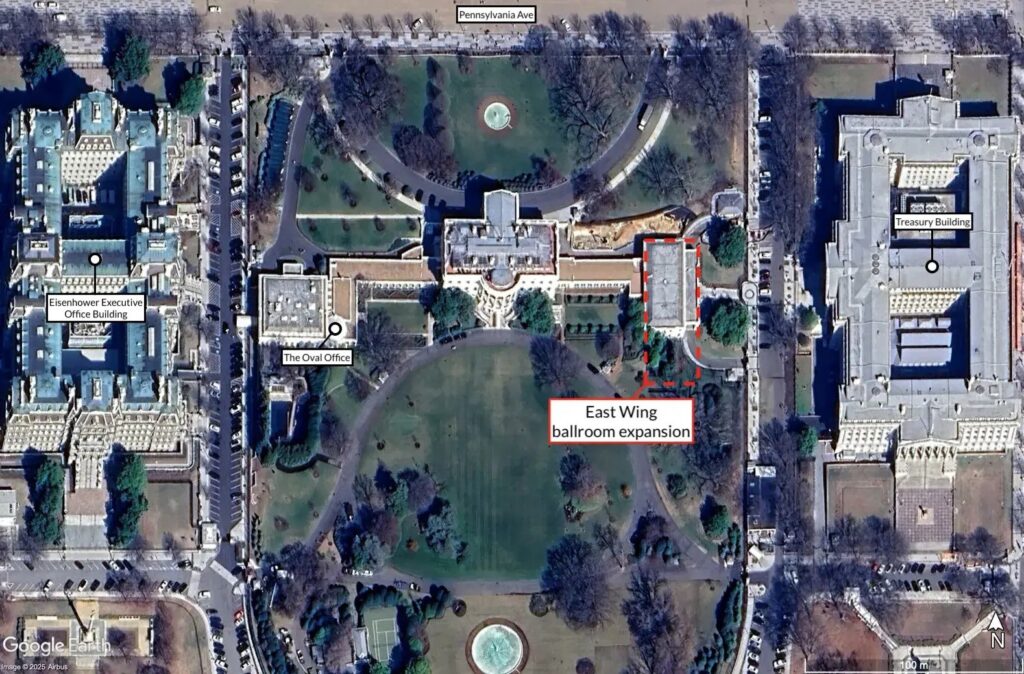
Friendswood ISD’s $165 Million Bond Package: What Voters Need to Know About the True Costs
Friendswood, TX – As the November 4, 2025, general election approaches, residents of the Friendswood Independent School District (FISD) face a significant decision on four bond propositions totaling $165 million in principal debt. Located primarily in the city of Friendswood—a suburban community in Galveston County, Texas, with a small portion extending into neighboring Brazoria County—FISD serves approximately 6,210 students across pre-K through 12th grade in one of the state’s top-rated districts.
Under the leadership of Superintendent Thad Roher, who has risen through the ranks from assistant principal to deputy superintendent before assuming his current role, the district emphasizes academic excellence, with 76% of students proficient in reading and 71% in math based on recent state assessments.
This bond package, unanimously called by the FISD Board of Trustees on August 11, 2025, marks the district’s next major debt issuance since the $127 million bond approved in 2020.
While the district’s bond promotion materials outline the intended uses for these funds, they often omit the full financial picture, including interest costs that could nearly double the total repayment burden. Drawing on analysis from the Texas Public Policy Foundation (TPPF) and district Voter Information Documents (VIDs), this report breaks down each proposition, highlights the complete costs, and provides context on potential tax impacts to empower voters.
The Propositions at a Glance
FISD’s proposals stem from recommendations by the district’s Citizen Advisory Committee (CAC), which met six times earlier this year to assess facility needs amid steady enrollment growth and aging infrastructure.
The committee prioritized projects like campus replacements and technology upgrades to accommodate projected increases, such as a 27-student rise in agriculture exploration programs at Friendswood Junior High for the 2025-26 school year.
Here’s a detailed look:
- Proposition A: $154,750,000 for Facility Construction and Renovations
This flagship measure funds a new Westwood Elementary and Bales Intermediate replacement campus, renovations at Windsong Elementary, accessible playgrounds, athletic facility upgrades (including locker rooms), an agricultural science center, and new school buses. These improvements address overcrowding and modernization needs in a district known for its strong community involvement and nationally recognized programs like the Academic Decathlon.
Full Cost (per VID): Principal $154,750,000; Estimated Interest $169,533,571; Total Repayment $324,283,571. - Proposition B: $2,000,000 for Classroom Technology
Aimed at equipping students with modern tools, this covers new computers and tablets to enhance digital learning in FISD’s high-performing classrooms.
Full Cost (per VID): Principal $2,000,000; Estimated Interest $496,445; Total Repayment $2,496,445. - Proposition C: $4,250,000 for Recreational Facilities
This targets upgrades to baseball and softball fields, promoting extracurricular opportunities in a district that values well-rounded student development.
Full Cost (per VID): Principal $4,250,000; Estimated Interest $1,054,946; Total Repayment $5,304,946. - Proposition D: $4,000,000 for Refinancing Maintenance Tax Notes
This proposition refinances existing short-term debt, potentially lowering immediate payments but extending the repayment timeline.
Full Cost (per VID): Principal $4,000,000; Estimated Interest $3,572,267; Total Repayment $7,572,268.
These breakdowns, sourced from the district’s VIDs and echoed in TPPF’s review by analysts James Quintero and Daniel Villalva (published September 24, 2025), reveal that promotional summaries fall short by excluding interest estimates—critical details buried in fine print.
In total, the $165 million principal could balloon to $339,657,230 when repaid in full, effectively more than doubling the cost due to interest.
Tax Impact: What It Means for Friendswood Homeowners
Approval of the full package would increase FISD’s interest and sinking (I&S) tax rate by $0.13 per $100 of assessed property value starting in fiscal year 2026-27, according to district documents and CAC projections.
For a home with a taxable value of $450,000—close to the median in Friendswood—this equates to an additional $48.75 per month, or about $585 annually.
Earlier CAC estimates suggested a broader range of $110 to $140 annually per $100,000 valuation, reflecting variability based on final appraisals were revised upward.
This hike comes despite a projected decrease in the overall tax rate to $1.03 per $100 valuation for FY 2025-26 (from $1.04 the prior year), driven by an enrollment bump of 98 students that boosts state funding by over $2.65 million.
The M&O rate, funding daily operations, remains steady at $0.7869, while the I&S portion drops slightly to $0.2431 pre-bond.
If passed, however, the bond debt would reverse that I&S relief, underscoring the trade-off between infrastructure gains and household budgets.
Why Transparency Matters for FISD Voters
Friendswood’s tight-knit community—home to exceptional parent-teacher associations and booster clubs—has long supported FISD’s pursuit of excellence, earning it accolades like the 5th most efficient Texas school district from the Texas Business Coalition.
Yet, as Superintendent Roher noted during July board discussions, finalizing these propositions required balancing urgent needs against fiscal prudence.
Voters deserve unvarnished facts: not just what the bonds will build, but the long-term price tag.
Texas law’s VID requirement is a vital safeguard, offering stakeholders a clear view of debt, taxes, and impacts—tools that helped inform this analysis. As Quintero and Villalva emphasize, armed with this knowledge, Friendswood residents can vote confidently, ensuring investments align with community priorities.
For more on the propositions, visit FISD’s bond page at myfisd.com. Early voting begins October 20, 2025, with polls open through November 4.

Featured
Radical Doc Ditches Her Scalpel After Paxton’s Lawsuit Exposes Transgender Hustle

Dallas, TX – A Dallas pediatrician, once hailed as a “trusted resource” for troubled teens, has thrown in the towel on her medical career. Dr. May Lau, the UT Southwestern associate professor whose office walls likely echoed with the sobs of confused adolescents, has voluntarily surrendered her Texas medical license. This comes hot on the heels of a blistering lawsuit from Attorney General Ken Paxton, who accused her of peddling banned gender-transition drugs to at least 21 minors, all while allegedly doctoring records to dodge the law.
Let’s rewind the tape, because this isn’t just another footnote in the endless culture war skirmishes. It’s a stark reminder that in the Lone Star State, at least, the adults in the room are finally drawing a line in the sand against the medical-industrial complex’s latest fad: turning kids into lab rats for irreversible experiments.
Senate Bill 14, signed into law by Gov. Greg Abbott in 2023 and upheld by the Texas Supreme Court, couldn’t be clearer: No puberty blockers, no cross-sex hormones, no mutilating surgeries for anyone under 18 chasing a “gender identity” that clashes with their biology. It’s common-sense guardianship, rooted in the unshakeable truth that children—bless their impressionable hearts—aren’t equipped to consent to life-altering alterations pushed by activists masquerading as healers.
Paxton’s office dropped the hammer on Lau back in October 2024, filing suit in Collin County and laying out a dossier of alleged deceit that would make a Watergate operative blush. We’re talking falsified prescriptions, bogus billing codes, and medical records twisted to make testosterone shots look like treatment for anything but affirming a minor’s delusion about their sex... alleges Paxton. Paxton says over 20 kids—biological females, no less—got dosed with this controlled substance, all post-ban, in direct defiance of Texas Health & Safety Code § 161.702(3). And for good measure, Paxton tacked on claims under the Deceptive Trade Practices Act, painting Lau as a scofflaw who didn’t just break the rules; she gamed the system to keep the hormone pipeline flowing.
Lau’s professional bio paints her as the epitome of the caring clinician: A pediatric specialist at Children’s Medical Center Dallas and Plano, with a self-proclaimed mission to “guide my patients to make the best and healthiest decisions for them“—alongside their parents, naturally. Her Healthgrades profile boasts expertise in adolescent health, reproductive woes, and menstrual mysteries, and she’s even open to telehealth chats for the Zoom-generation youth. But peel back the polish, and the shine fades fast: A measly 2.7-star rating from patients, whispers of controversy, and now this. Affiliated with powerhouse institutions like UT Southwestern, Lau wielded privileges that let her roam hospital halls unchecked—until Paxton turned the spotlight.
The fallout? Swift and surgical. As the case barreled forward, Paxton inked a Rule 11 agreement with Lau, slamming the brakes on her patient-facing practice mid-litigation. No more stethoscope sessions, no more “guidance” sessions that could scar a lifetime. And now, the coup de grâce: Her license is toast, voluntarily surrendered to the Texas Medical Board, ensuring she can’t play white-coated wizard with Texas tykes ever again. The civil suit chugs on, with Paxton gunning for injunctions and fines up to $10,000 per violation—because accountability isn’t optional when you’ve potentially wrecked young bodies and psyches for ideology’s sake.
Attorney General Paxton didn’t mince words in his victory lap, and why should he? “Doctors who permanently hurt kids by giving them experimental drugs are nothing more than disturbed left-wing activists who have no business being in the medical field,” he thundered in a statement that lands like a constitutional thunderclap. “May Lau has done untold damage to children, both physically and psychologically, and the surrendering of her Texas medical license is a major victory for our state. My case against her for breaking the law will continue, and we will not relent in holding anyone who tries to ‘transition’ kids accountable.“
Spot on, Ken. This isn’t about cruelty; it’s about custody of the innocent. While the ACLU’s Harper Seldin wails that such enforcement is a “predictable and terrifying result,” trotting out the tired trope of politicians meddling between “families and their doctors,” let’s call the bluff. Families? Try ideologues greenlighting puberty blockers for preteens. Best medical judgment? More like Big Pharma’s profit playbook, subsidized by blue-state bureaucrats and cheered by coastal elites who wouldn’t dream of letting their own kids near the knife.
Lau’s capitulation isn’t isolated—it’s the latest domino in Paxton’s crusade. Just this year, he’s reined in three other Lone Star docs for similar sins, while states like Arkansas and Florida see their bans clobbered in court only to bounce back on appeal. Twenty-six states now stand athwart this madness, a federalist firewall against the transgender tide.
For constitutional conservatives, this saga sings the praises of federalism at its finest: States as laboratories of liberty, shielding the vulnerable from federal overreach and cultural contagions alike. Dr. Lau’s license loss? It’s not vengeance; it’s vindication. A win for wary parents, bewildered youth, and the unyielding biology that no amount of activism can rewrite. As Paxton presses on, one can’t help but wonder: Who’s next in the crosshairs? Because in Texas, the housecleaning has only just begun.
Featured
National Trust Tries to Bully the President

The National Trust for Historic Preservation (NTHP), a private 501(c)(3) nonprofit, sent a sharply worded “demand” letter to the National Park Service (NPS) on October 21, aiming to halt President Trump’s bold plan to demolish the White House’s East Wing for a grand 90,000-square-foot ballroom addition.
The move, meant to modernize the People’s House for state dinners and global summits, has preservationists clutching their blueprints in horror. But this isn’t about saving history—it’s about a private club flexing muscle it doesn’t have, trying to strong-arm an Executive Branch that answers only to the Constitution and the American people.

Let’s get one thing straight: The NPS, which oversees the White House as a national historic site, isn’t a free-floating bureaucracy taking orders from self-appointed guardians of granite. It’s a cog in the Department of the Interior, a cabinet-level agency nestled firmly within the Executive Branch. Article II of the Constitution vests the President with singular authority to administer the government, meaning the NPS takes its marching orders from 1600 Pennsylvania Avenue, not a donor-funded NGO with a fancy letterhead. The President doesn’t need a permission slip from anyone—least of all a group whose congressional charter from 1949 (Title 54 U.S.C.) grants them zero enforcement power, only a soapbox to “facilitate public participation” in preservation debates.
The White House, battered by time and tight quarters, needs this upgrade. The East Wing, a 1940s wartime add-on, wasn’t built for 21st-century diplomacy. Trump’s team, riding a fresh mandate from 74 million voters, broke ground on October 20 to clear the way for a ballroom that can host world leaders without elbowing ambassadors into the Rose Garden. It’s a practical fix, not a wrecking ball to history. Yet the NTHP, led by President and CEO Carol Quillen, fired off their letter to the NPS, the National Capital Planning Commission (NCPC), and the Commission of Fine Arts, demanding a “pause” until the project undergoes “legally required public review processes.” Their fear? The new wing might “overwhelm” the White House’s aesthetic balance, as if a President’s vision for his own residence needs a focus group’s approval.

This is where the NTHP’s overreach gets laughable. Their charter, signed by Harry Truman, makes them a nonprofit cheerleader for preservation, not a coequal branch of government. They’re a membership organization—think country club for history buffs, bankrolled by corporate sponsors and tax-deductible donations. They partner with the NPS on grants and advocacy, sure, but that’s like a booster club claiming veto power over the coach’s playbook.
The NPS, managing $62 million in Historic Preservation Fund grants for FY25, answers to Congress’s purse and the President’s pen, not Quillen’s pleas. The NCPC and CFA? They’re advisory bodies, not czars. Their input on D.C. federal projects, born from post-WWII urban planning laws, carries weight only as far as the President allows. For the White House itself? That’s executive turf, exempt from the zoning red tape that snarls lesser projects.
Quillen’s letter drips with sanctimonious concern, urging “transparency and broad input from the public.” Translation: Let us, the enlightened few, gatekeep the nation’s heritage. This isn’t advocacy—it’s audacity. The NTHP’s claim to speak for “the American people’s investment” in the White House ignores the 74 million who voted for action, not paralysis. Their cozy ties to the NPS—shared programs, joint field offices—make this less a principled stand than a power play by insiders who think they own the narrative on “historic.” The American Institute of Architects piled on in August, fretting about “scale and balance,” but their opinions, like the NTHP’s, are just that—opinions, not edicts.
Conservatives know this game. It’s the same soft tyranny we’ve seen in Texas, where unelected boards and NGOs try to smother progress with red tape. From Austin’s zoning wars to the Alamo’s restoration fights, we’ve learned that preservation without purpose is just stagnation. The White House isn’t a museum diorama; it’s a living seat of power, meant to project American strength. Trump’s ballroom isn’t defacing history—it’s enabling it to serve the future.
White House officials, unmoved by the posturing, signaled yesterday that demolition continues. “The scope and size of the project has always been subject to vary as the process developed,” a spokesperson said, noting plans would hit the NCPC “at the appropriate time.” In other words: We’re building, and your memo’s been filed under ‘irrelevant.’ (my words) That’s the Executive Branch at work—accountable to the voters, not the vetoes of a nonprofit elite.
This dust-up exposes a deeper rot: the creeping assumption that private groups can check the President’s constitutional power. The NTHP’s letter isn’t just a misstep; it’s a microcosm of the swamp’s obsession with control, where every decision must pass through layers of unelected gatekeepers. Article II doesn’t bend to such nonsense. The President’s authority over his own residence, and the agencies that serve it, is as clear as the Constitution’s parchment.
In Texas, we’ve fought these battles before—against bureaucrats who’d rather embalm our past than let it breathe. The White House deserves the same fierce pragmatism. The NTHP’s demands are confetti in a constitutional storm—pretty, fleeting, and powerless against the will of a President elected to act. Let the jackhammers roar. America’s house is getting a long-overdue upgrade, and no amount of nonprofit noise can stop it.
Featured
30 Children Saved in Texas Anti-Trafficking Operation

San Antonio, TX – More than 30 missing children were located and recovered during Operation Lightning Bug, a focused law enforcement initiative that stretched from July 28 through August 15. The operation, centered in San Antonio, unveiled not only the scale of child exploitation in the state but also the increasingly urgent role Texas agencies are being forced to play in combating trafficking amid a national border crisis.
The U.S. Marshals Service (USMS), working in concert with the San Antonio Police Department (SAPD) and the Lone Star Fugitive Task Force, spearheaded the mission. In an official release, USMS confirmed that “over 30 missing juveniles” were located, six confirmed trafficking survivors were removed from exploitation, five trafficking investigations were launched, three individuals were arrested for harboring runaways, and nine felony warrants were executed. Additionally, “over 120 missing juveniles [were] encouraged to return home, resulting in cleared entries from state and national databases.”
“The safety of our children is the safety of our communities, and justice demands that we protect those who cannot protect themselves,” said U.S. Marshal Susan Pamerleau for the Western District of Texas. “Through Operation Lightning Bug, we reaffirm our promise to safeguard the most vulnerable and strengthen the safety of our communities.”
SAPD Chief William McManus echoed the urgency behind the operation, stating, “Every suspect arrested, juvenile returned home, and survivor taken out of harm’s way matters. This operation demonstrates what can be achieved when law enforcement agencies unite to protect children.”
A Deliberate Target on Traffickers
Operation Lightning Bug was highly strategic. Teams reviewed every missing juvenile listed in both the Texas Crime Information Center and the National Crime Information Center databases, identifying cases where minors were deemed “at high risk of exploitation by traffickers and predators.” The operation included deputies from USMS offices in San Antonio, Del Rio, Midland, and Pecos, along with specialized SAPD units, including Missing Persons, Special Victims, covert teams, and Street Crimes personnel. Intelligence gathering allowed law enforcement to prioritize the most vulnerable cases and craft operational plans that led to direct recoveries and arrests.
SAPD’s Special Victims Unit interviewed each recovered child to determine whether they had been victimized. Trafficking survivors were immediately connected with Texas Health and Human Services and partner organizations to ensure long-term safety, mental health support, and reintegration assistance.
According to data from the International Center for Missing and Exploited Children, more than 330,000 minors were reported missing in the United States in 2024. While many are found quickly, those who lack stable homes or strong support systems are increasingly being targeted by trafficking rings.
Trafficking Thrives on Instability — and Policy Failure
Kirsta Leeburg Melton, founder and CEO of the Institute to Combat Trafficking, explained to Fox News that “trafficking is the exploitation of men, women and children for forced sex or forced labor by a third party for their profit or gain. That’s been around forever. What hasn’t really been around is people’s understanding of that crime and their knowledge that it’s happening everywhere.”
Melton further noted that traffickers prey on minors with “unstable home lives,” including those suffering from a lack of food, housing, family support, or emotional security. Technology serves as a primary tool for both predators and buyers, giving traffickers a near-invisible reach into vulnerable groups.
The unprecedented influx of undocumented minors during the Biden administration placed child welfare and trafficking oversight systems under intense strain—a crisis Texas law enforcement is still working to contain. By contrast, under President Trump’s term, stricter border enforcement and cartel disruption efforts made it significantly harder for trafficking networks to exploit cross-border routes at scale.
Texas Law Enforcement Takes the Lead
While Washington debates border security and trafficking enforcement in committee rooms, Texas law enforcement agencies continue to operate on the front lines. Operation Lightning Bug not only demonstrated the capability of state and federal joint task forces but also reinforced the necessity of cooperation among local agencies.
The Lone Star Fugitive Task Force, involved in the operation, consists of personnel from SAPD, the Bexar County Sheriff’s Office, Texas DPS, the Texas Attorney General’s Office, Naval Criminal Investigative Service (NCIS), New Braunfels Police Department, Texas Board of Criminal Justice OIG, Bexar County District Attorney’s Office, U.S. Immigration and Customs Enforcement (ICE), and the U.S. Marshals Service.
Under authority granted by the Justice for Victims of Trafficking Act of 2015, the U.S. Marshals Service now has explicit power to intervene in missing child cases regardless of whether a sex offender or fugitive is involved. This expansion allowed USMS to establish the Missing Child Unit, which now collaborates rapidly with nationwide law enforcement partners.
Operation Lightning Bug showed what can happen when that authority is fully exercised. It demonstrated what many Texans already know: when state and local agencies are given the backing, funding, and legal authority to act, children are saved, predators are taken down, and trafficking networks are disrupted—sometimes permanently.
A Crisis That Isn’t Slowing Down
In August, 11 children were reported missing in North Dakota—a state with a population of fewer than one million. Earlier, in June, authorities recovered more than two dozen children in a Florida operation described as a “first-of-its-kind missing child rescue operation.” These numbers indicate a nationwide escalation rather than isolated events.
As Texas continues to serve as a primary trafficking corridor due to its geographic proximity to the border and multiple interstate routes, state officials are increasingly forced to respond where federal leadership has not.
Child trafficking is often framed as a distant, foreign evil—but Operation Lightning Bug makes it clear: the victims live here. They disappear from neighborhoods, schools, shelters, foster systems, and broken homes. They are not statistics; they are Texas children, lost to predators who thrive in moments of policy weakness and exploit institutional gaps.
Texas Fights — Even as the Battle Grows Harder
There is no declared victory here. But there is proof of impact. Thirty children were found. Six survivors of trafficking were brought out of exploitation and into safety. Five new investigations are underway, likely mapping broader criminal networks. Over 120 missing children—some voluntarily gone, some running from abuse—were convinced to return home. Felony suspects are now in custody.
More importantly, the operation forced public attention on a crisis that prefers to operate in the shadows.
Every rescued child represents a life pulled off a path toward trauma, abuse, or death. Every warrant served sends a message that Texas still has teeth in its justice system. And every coordinated effort reminds traffickers that the state is watching.
Operation Lightning Bug is not the end—but it is a bright flash in the dark, signaling that Texas law enforcement is willing to strike, even when others won’t.


You must be logged in to post a comment Login